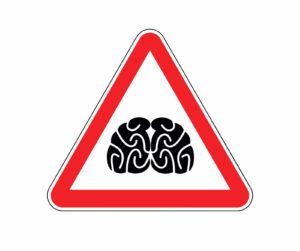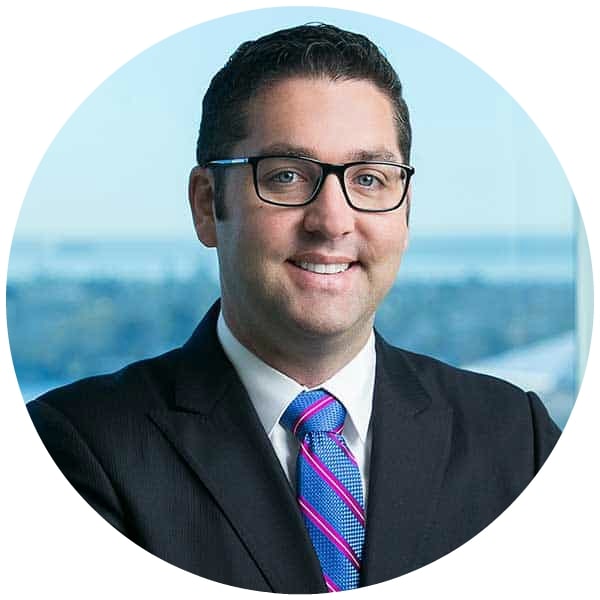When you’re injured in an accident or due to an intentional act, you don’t automatically think about brain injuries, at least not until the symptoms begin. If you’re like many people, you equate traumatic brain injuries with horrific head wounds. Because of CTE’s notoriety and press coverage, you might even think about football injuries. If you’re in an accident and you sustain fractures, lacerations, and other more visible trauma, you might not even realize that you injured your brain as well.
The Center for Disease Control and Prevention cites traumatic brain injury as a major cause of death and disability in the United States. TBIs are common because they often occur during everyday activities such as work, play, and organized sports. They are deceptive because there’s often no external bleeding, bruising, or other visible signs that people typically associate with serious injuries.
Head wounds cause brain trauma but some of the most severe brain injuries don’t involve direct head contact. They sometimes occur when a person’s body is severely jolted or shaken. This often happens during a serious auto accident, in contact sports, and when a caregiver severely shakes a small child. Shaken Baby Syndrome causes such severe brain injuries, the CDC calls it “a preventable tragedy.“
In recent years, the Centers for Disease Control and Prevention has documented some ominous brain injury statistics:
- The CDC estimates an average of 155 TBI-related deaths nationwide each day.
- From 2006 to 2014, brain-injury related ER visits, hospitalizations, and fatalities increased by 53 percent.
- Moderate to severe brain injuries cause disabilities in 61 percent of the affected children.
- 283,000 children seek medical treatment for a sport or recreation-related TBI each year.
- Chronic Traumatic Encephalopathy (CTE) is a result of repeated contusions and other brain trauma.
Traumatic Brain Injuries Are Complex
A diagnosis of “traumatic brain injury” or TBI is often more complicated than the name indicates. The term refers to a range of brain injuries. Depending on the type of trauma, the resulting injury and its location in the brain, a brain injury often affects one or more critical brain-controlled processes. They can alter your movement, thinking, emotions, and everything else you do. As different parts of your brain control different functions, your symptoms provide clues as to what’s occurring inside your brain and where.
The American Association of Neurological Surgeons’ traumatic brain injury page describes the possible conditions that occur after brain trauma.
Surgical Lesions
Contusions, hematomas, and hemorrhages are areas of damage sometimes found in the brain after a trauma.
- Hematoma: A blood clot within the brain or on its surface.
- Contusion: Bruised areas consisting of swollen brain tissues and blood, similar to bruises elsewhere on a human body
- Intracerebral Hemorrhage: Bleeding within the brain, often associated with contusions
- Subarachnoid Hemorrhage: A thin layer of blood spread over the brain’s surface
Diffuse Axonal Injuries (DAI)
Diffuse brain injuries are so microscopic they don’t appear on CT scans or MRIs usually. They can diminish the nerve cells’ ability to communicate with other nerve cells. Ischemia can educe blood flow in the brain at a time when it’s critical to brain functioning.
Skull Fractures
The American Association of Neurological Surgeons describes minor skull fractures as “simple cracks” for which they often recommend no treatment. A depression skull fracture is more serious. It often causes injury, as the damaging impact sometimes pushes the bone into the brain. The most problematic fractures occur at the skull’s base. They sometimes damage nerves or arteries and cause cerebrospinal fluid leakage from an injured person’s nose.
Rapid Diagnosis Is Critical
The AANS suggests that there are no “miracle cures” to prevent the nerve damage that sometimes follows a brain injury. They stress rapid evaluation because diagnosis and treatment are critical to minimizing damage. Emergency treatment serves primarily to prevent secondary complications such as those caused by lack of blood flow.
Recognizing Brain Damage Signs and Symptoms
 You can have a brain injury even when you have no visible bleeding, bruising, abrasions or lumps. If you’ve experienced head trauma or a severe body jolt, there’s always a possibility that you’ve sustained a brain injury. it’s important to recognize the signs and symptoms and seek immediate medical attention.
You can have a brain injury even when you have no visible bleeding, bruising, abrasions or lumps. If you’ve experienced head trauma or a severe body jolt, there’s always a possibility that you’ve sustained a brain injury. it’s important to recognize the signs and symptoms and seek immediate medical attention.
The Centers for Disease Control and Prevention and the National Institute for Neurological Disorders and Stroke list symptoms to look for when you suspect that you or a friend has a TBI:
- A brief change in or loss of consciousness
- Memory loss
- Coma
- Headaches
- Confusion
- Problems thinking and concentrating
- Light-headedness
- Dizziness
- Vision problems
- Ear ringing
- Unusual taste in the mouth,
- Tiredness or lethargy
- Disruptive sleep patterns
- Vomiting or nausea
- Seizures
- Convulsions
- Coordination issues
- Inability to awaken
- Pupil dilation
- Slurred speech
- Weakness and numbness
- Restlessness
- Agitation
Traumatic Brain Injuries: Simple Explanations
A brain injury can occur anywhere and under any circumstances. The Model Systems Knowledge Translation Center which stresses simple explanations defines traumatic brain injury as “damage to brain tissue caused by an external mechanical force.” The Center for Disease Control and Prevention offers an equally simple definition: “A TBI is caused by a bump, blow, or jolt to the head that disrupts the normal function of the brain.” These simple explanations describe any type of brain injury, whether mild, moderate, or severe.
No two brain injuries are alike. However, they generally fit within three injury categories.
- Closed head: A trauma causes damage by twisting, shaking, or slamming the brain inside the skull.
- Open wound/Penetrating injury: An object fractures the skull/dura and sometimes physically enters the brain.
- Crushing injury: A blow crushes an area of the skull and sometimes causes brain stem damage.
Occurrences That Cause Brain Injuries
The National Data and Statistical Center’s Brain Injury Database has tracked 17,317 adults through initial emergency care, neurosurgical care, inpatient rehabilitation, and long-term follow-up. The group has 16 regional centers where they’ve documented some TBI patients’ recoveries for as long as 30 years. Their data determined that TBIs primarily occur during four types of events.
- Vehicle accidents: 50 percent of the TBI patients sustained their injuries in a vehicle accident. Their “vehicle” definition includes car, truck, motorcycle, snowmobile, and other automated transportation devices.
- Falls: 28 percent of the TBI patients injured their brains in a fall. The incidents include accidental falls on the same surface, from an elevation, while walking down a flight of stairs, or while working or playing on elevated equipment or machinery.
- Violence: 11 percent of the recorded brain injuries occurred as a result of physical and gun violence.
- Other: 11 percent of brain injuries occur due to medical procedures or surgeries and a variety of other circumstances.
The NDSC’s centers also document statistics on who sustains these injuries. The average age of a brain-injury victim is about 42 years old. The center documented these additional demographics.
- Sex: Men sustained 73.6 percent of diagnosed brain injuries. Women sustained 26.4 percent
- Race: White, 66 percent; Black, 18 percent; Asian/Pacific Islander, 3.0 percent; Native American 0.5 percent; Hispanic Origin, 11 percent; Other, 1 percent
- Marital Status: Single, 46 percent; Married, 33 percent; Divorced/Separated, 16 percent; Widowed, 5 percent
What Happens After a Diagnosis?
The CDC determined that TBIs cause or contribute to 30 percent of all injury-related deaths in the United States. When a person survives the initial trauma, their treatment usually begins in the emergency room and continues with inpatient care.
Inpatient Rehabilitation
After a moderate to severely injured TBI patient reaches maximum physical healing, they often begin learning strategies to help them cope when they return to normal life. Through inpatient rehabilitation, TBI patients learn to manage their body’s new changing physical, cognitive, emotional, and behavioral demands.
They may work with physical, occupational, and speech therapists depending on their symptoms. Rehabilitation efforts focus on their specific weaknesses such as memory and language losses, diminished strength, eating and swallowing problems, and emotional shifts. Patients with more profound disabilities must often re-learn how to perform basic personal and household tasks.
If inpatient rehabilitation is necessary, they often require ongoing follow up care, outpatient rehabilitation, physical strengthening, and psychological counseling upon discharge. When necessary, they develop new skills to help them manage newly-developed impairments. Regardless of their rehabilitation efforts, TBI patients often deal with decreased life expectancies, poor overall health, functional disabilities, and quality of life issues. They must make adjustments to meet changes in their family and work-life dynamics, and in many cases, may not be able to return to previous career pursuits, hobbies, or family responsibilities.
Changing Normalcy
Recovering brain injury patients often live their lives based on changing rules. The Model Systems Knowledge Translation Center discusses the potential life changes.
- Alcohol consumption: If a TBI patient drank alcohol before their injury, they learn to abstain from alcohol as it sometimes slows their healing progress. Alcohol reduces a TBI patient’s seizure threshold and increases the risk of new brain injuries. Alcohol also contributes to diminished mental capacity, depression, and other conditions.
- Driving: 40 to 60 percent of TBI patients with moderate to severe injuries eventually drive again. It often requires overcoming vision, concentration, coordination, and other impairments. Some TBI-impaired drivers operate vehicles with hand controls, lifts, left foot braking, and other modifications.
- Family and friends: In addition to physical, emotional, and cognitive problems, TBI patients often deal with personality shifts and communication challenges that disrupt their personal relationships. Their problems often require changes in existing roles and relationships.
- Progressive conditions: The Brain Injury Association of America considers TBI a progressive disease. “Recovered” patients often develop Parkinson’s disease, dementia, and other degenerative conditions.
Traumatic Brain Injuries in Older Adults
Older adults experience the same problems as other TBI patients. Unfortunately, they encounter treatment obstacles that sometimes inhibit their recovery efforts. Senior patients experience slower recoveries, higher fatality rates, and less improvement than younger patients. They also require longer hospitalizations and experience more significant disabilities.
In the NCBI-published Concussion Magazine article “Traumatic brain injury in older adults: do we need a different approach?“ doctors Matthew E Peters and Raquel C Gardner discuss how seniors have a high risk of death even with a moderate injury diagnosis. Anticoagulants are often a concern when treating senior TBI patients. The drugs promote intracranial bleeding which hinders healing and often worsens the original injury.
Additionally, senior patients are more likely to have pre-existing conditions that increase the chances of an adverse outcome. The authors conclude that emergency intake and assessment procedures must change to efficiently identify senior TBI patients’ treatment needs.
Senior Research
The recent focus on military, auto accident and sports-related TBIs has brought in private funding to find new solutions. The newer studies don’t address senior TBI patients’ needs, especially those age 75 and older. Peters and Gardner recommend that TBI clinical researchers find ways to include geriatric patients instead of systematically excluding them from clinical studies based on age.
Do You Need an Attorney if Someone Caused Your Brain Injury?

When someone injures you, a personal injury attorney can protect your legal rights. Brain injury liability claims are more complicated than non-catastrophic injury cases. They often involve complex legal and medical issues. A settlement or court award must pay the expenses for permanent impairments that often last a lifetime. When you’re dealing with an insurance company, you need a legal representative to make sure the insurance company treats you fairly.
When you schedule a legal consultation, you meet with an experienced personal injury attorney. The attorney listens to your story, discusses your injuries, and explains your legal options. You don’t have to make a commitment to move forward until you’re ready.
In the wake of a brain injury, whether suffered by you or a loved one, it can be difficult to know what to do next. Your primary focus needs to be on rehabilitation and pursuing a return to normalcy as much as possible. Let a trusted advocate handle the legal complexities of your case while you focus on your family, career, and recovery.







